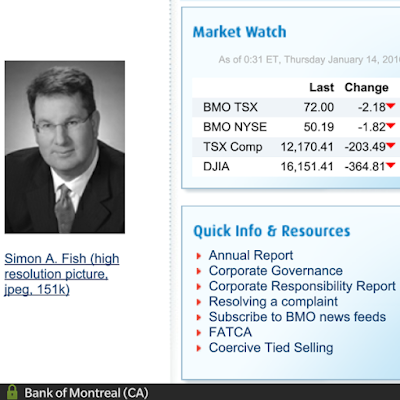Viral spiral #BMO STOCKS TIME TO #MoveMyMoney #Christians #ForTherecord #BMO #TWU #Money #Investing #Finance #Mortgage #BMOfiasco
JAN 15 2016
------------------------------------------------------------------------------
Bank of Montreal
http://www.bloomberg.com/quote/BMO:US
+ Watchlist BMO:US New York
48.79 USD
-2.03
-3.99%
-------------------------------------------------------------------------------
Bank of Montreal Toronto
http://www.bloomberg.com/quote/BMO:CN
BMO:CN Toronto






































